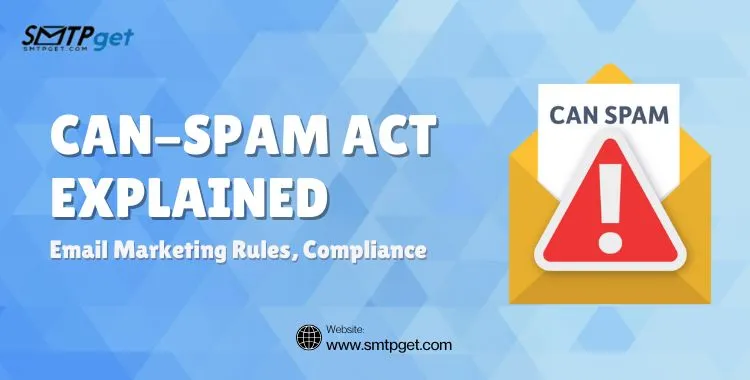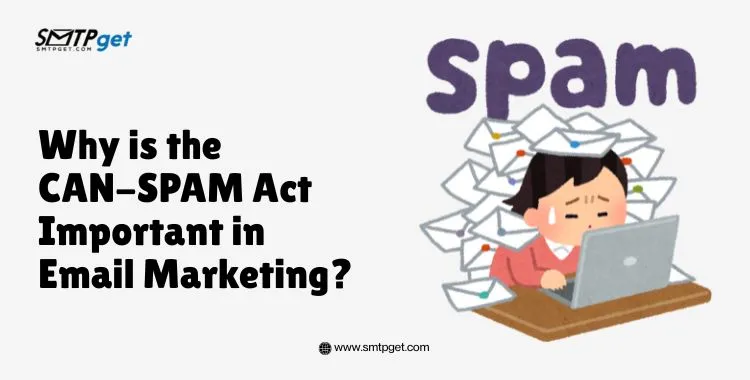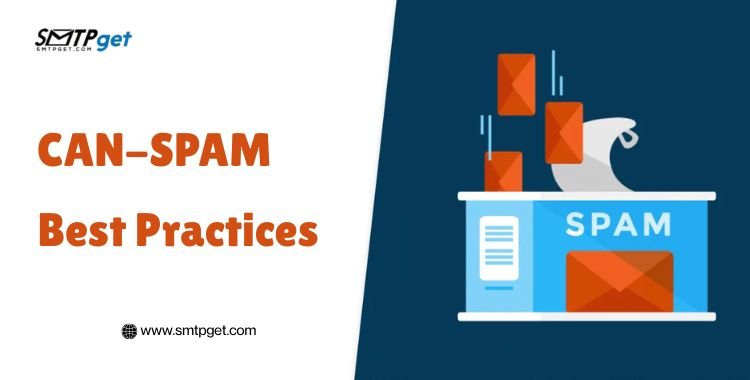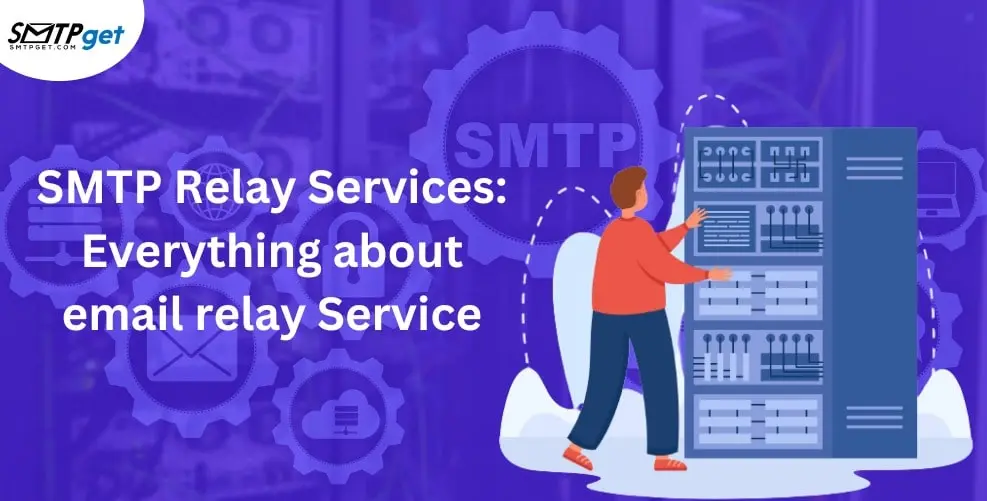The CAN-SPAM Act stands for Controlling the Assault of Non-Solicited Pornography And Marketing Act of 2003. It is a law passed by the United States Congress in 2003 that sets rules for sending commercial emails. It gives recipients the right to stop you from emailing them and spells out tough penalties for violations. Email marketing is one of the most powerful tools for businesses, but it comes with responsibilities. That’s where the CAN-SPAM Act in email marketing comes in. Passed in 2003, the CAN-SPAM Act sets clear rules for sending commercial emails, ensuring transparency, honesty, and respect for recipients’ preferences. For marketers, understanding and following the CAN-SPAM Act rules is crucial to avoid hefty fines and protect your brand reputation.

In this blog, we’ll walk you through what the CAN-SPAM Act is, why it matters, and how to achieve CAN-SPAM compliance in your campaigns. You’ll also learn about common CAN-SPAM Act violations that businesses make, and how to avoid them by adopting CAN-SPAM best practices. Whether you’re a small business owner or a seasoned marketer, this guide will help you stay legal, build trust with your audience, and improve the effectiveness of your email marketing efforts.
What is the CAN-SPAM Act?
The CAN-SPAM Act (Controlling the Assault of Non-Solicited Pornography And Marketing Act) is a law passed in the United States in 2003. It sets rules for commercial email and gives recipients the right to stop receiving unwanted emails from businesses.
In simple terms, the CAN-SPAM Act was designed to stop spam emails and make email marketing more transparent and respectful of recipients.
This law applies to all commercial emails, which means any message sent to promote a product or service. Even if your email goes to just one person, it still needs to comply with CAN-SPAM rules if it’s promotional in nature.
Why is the CAN-SPAM Act Important in Email Marketing?
The CAN-SPAM Act in email marketing plays a critical role in keeping the digital marketplace fair, transparent, and respectful of consumers’ privacy. For recipients, the law offers protection against being bombarded with unwanted, irrelevant, or even misleading emails. It gives consumers the right to opt out of receiving future emails and ensures they have control over their inbox.

For businesses, the CAN-SPAM Act rules help maintain email marketing as a trusted and effective communication channel. When recipients feel their preferences are respected, they’re more likely to engage with campaigns and remain loyal customers.
Failing to comply with the law can have serious consequences. Each separate email in CAN-SPAM Act violation can cost your business up to $51,744 per email, along with potential lawsuits and damage to your brand’s reputation.
That’s why marketers increasingly search for terms like CAN-SPAM Act in email marketing, CAN-SPAM Act violation, and CAN-SPAM Act rules – to understand their obligations, avoid legal risks, and uphold best practices that foster trust and deliver results.
By prioritizing CAN-SPAM compliance, businesses not only stay on the right side of the law but also build stronger, more respectful relationships with their audience, turning email marketing into a sustainable, long-term growth strategy.
The 7 CAN-SPAM Act Rules You Must Follow
Here are the key requirements of the CAN-SPAM Act-

Don’t use false or misleading header information
Your “From,” “To,” and “Reply-To” fields must accurately identify you or your business. You cannot pretend to be someone else.
Don’t use deceptive subject lines
Your subject line must reflect the content of the email honestly. For example, don’t write “Your order has shipped” if the email is actually an advertisement.
Identify the message as an ad
You need to indicate that your message is an advertisement. The law gives you flexibility on how you word this, but it must be obvious to the recipient.
Include your valid physical postal address
Every email must include a valid, physical postal address – it can be your current street address, a P.O. Box, or a private mailbox registered with a commercial mail receiving agency.
Tell recipients how to opt out of future emails
You must include a clear and easy way for recipients to unsubscribe or opt out of receiving more emails from you.
Honor opt-out requests promptly
If someone unsubscribes, you must remove them from your list within 10 business days. You cannot charge a fee or make them jump through hoops to unsubscribe.
Monitor what others are doing on your behalf
If you hire another company to handle your email marketing, you are still legally responsible for ensuring compliance.
These rules form the backbone of CAN-SPAM compliance and help businesses stay on the right side of the law.
What is a CAN-SPAM Act Violation?
A CAN-SPAM Act violation occurs when a business sends emails that break any of the rules above. Some common violations include-
- Sending emails without a clear opt-out mechanism.
- Ignoring unsubscribe requests or delaying their processing.
- Using misleading subject lines.
- Failing to include a physical address.
- Harvesting email addresses without consent.
Each separate email that violates the CAN-SPAM Act can result in fines, making non-compliance very costly.
CAN-SPAM Best Practices
While the CAN-SPAM Act sets minimum requirements, following best practices ensures your campaigns are not only legal but also effective. Here are CAN-SPAM best practices to follow-

Get Permission (Even Though Not Required by Law)
While the CAN-SPAM Act doesn’t technically require opt-in consent (unlike GDPR), it’s still best to send emails only to those who’ve agreed to receive them. This improves engagement and reduces spam complaints.
Use Double Opt-In
Have subscribers confirm their email after signing up. This reduces fake sign-ups and shows clear proof of consent.
Make Unsubscribing Easy
Your unsubscribe link should be clearly visible and one click away – no complicated steps.
Keep Your List Clean
Regularly remove inactive or bounced email addresses from your list.
Personalize and Segment
Relevant, targeted emails are less likely to be marked as spam.
Test Your Emails
Before sending, check your emails with spam-checking tools to ensure your message isn’t flagged.
By combining compliance with these best practices, you can improve deliverability and maintain a positive brand image.
CAN-SPAM Act vs. GDPR- What’s the Difference?
If you also send emails to people in the EU, you need to know the difference between the CAN-SPAM Act and GDPR.
| Aspect | CAN-SPAM Act | GDPR |
| Consent | Not required before sending | Explicit consent required |
| Opt-Out/Opt-In | Opt-out | Opt-in |
| Enforcement | FTC | Local Data Protection Authorities |
| Fines | Up to $51,744 per email | Up to €20 million or 4% of global turnover |
Even if CAN-SPAM allows you to email without consent, it’s wise to get permission to align with global best practices.
Benefits of CAN-SPAM Compliance
Following the CAN-SPAM Act in email marketing is not just about avoiding penalties – it also improves the effectiveness of your campaigns. By sticking to CAN-SPAM best practices, you can enjoy these key benefits:
- Better deliverability: When you follow the CAN-SPAM Act Rules, your emails are less likely to get flagged as spam. This means more of your messages actually reach the inbox.
- Higher engagement rates: Compliant emails tend to perform better because they’re sent to genuinely interested subscribers, resulting in higher open and click-through rates.
- Avoid legal issues: Non-compliance can lead to hefty fines. Staying CAN-SPAM compliant helps you avoid costly CAN-SPAM Act violations.
- Protect your brand reputation: Sending spammy or misleading emails damages your credibility. Compliance shows your audience you respect their privacy.
- Build trust: Transparency, honesty, and respect for recipients’ preferences foster long-term trust with your audience.
How to Check if You’re CAN-SPAM Compliant
Wondering if your email campaigns meet CAN-SPAM compliance standards? Use this quick checklist to make sure you’re on track:
- Are your “From” and “Reply-To” fields accurate?
You must clearly identify who is sending the email. Don’t use fake names or misleading email addresses. - Is your subject line honest?
Your subject line must accurately reflect the content of your message – no clickbait or false claims. - Did you include your physical business address?
Every email must include your valid physical postal address (street address, PO box, or private mailbox). - Is there a clear unsubscribe link?
You must provide recipients with a simple way to opt out of future emails, and it must work for at least 30 days after the email is sent. - Do you remove unsubscribed users within 10 days?
You are required to honor opt-out requests within 10 business days. - Are you monitoring your marketing partners?
Even if you hire another company to send emails on your behalf, you’re still responsible for ensuring they comply with the CAN-SPAM Act Rules.
If you answered “yes” to all the above, congratulations – you’re on the right path to full CAN-SPAM compliance!
By making CAN-SPAM best practices a standard part of your email marketing strategy, you can avoid CAN-SPAM Act violations, build stronger relationships with your audience, and ensure your campaigns stay effective and legal.
What Happens if You Violate the CAN-SPAM Act?
Violations can be expensive – each non-compliant email can cost you thousands of dollars. The Federal Trade Commission (FTC) actively investigates complaints, and businesses found guilty can face lawsuits, fines, and reputational damage.
Here are some real-world examples of penalties:
- A business fined $900,000 for failing to honor unsubscribe requests.
- A company fined for using deceptive subject lines.
These examples show how serious CAN-SPAM Act violations can be.
Final Thoughts
The CAN-SPAM Act in email marketing is all about respect – respect for your audience’s inbox, their preferences, and their privacy. While compliance might seem like a burden, it actually improves the quality of your campaigns and builds trust with your subscribers.
By understanding and applying the CAN-SPAM Act rules, avoiding CAN-SPAM Act violations, and following CAN-SPAM best practices, you’ll not only stay on the right side of the law but also create more successful email marketing campaigns.
Remember: good email marketing is not about sending as many emails as possible. It’s about sending the right email to the right person at the right time – and legally!
FAQs (Frequently Asked Questions)
Here are some frequently asked questions about the CAN-SPAM Act in email marketing.
Learn how to stay compliant, avoid violations, and follow best practices for effective campaigns.
1. What is the CAN-SPAM Act?
The CAN-SPAM Act is a U.S. law passed in 2003 that sets rules for commercial emails. It gives recipients the right to opt out and penalizes CAN-SPAM Act violations.
2. Why is the CAN-SPAM Act important in email marketing?
The CAN-SPAM Act in email marketing protects consumers from spam and helps businesses maintain trust by following fair and transparent practices.
3. Who must follow the CAN-SPAM Act Rules?
Anyone sending promotional emails in the U.S., even to one person, must comply with all CAN-SPAM Act Rules to avoid penalties.
4. What are the main CAN-SPAM Act Rules?
Use honest headers and subjects, identify ads, include your address, add an opt-out link, honor unsubscribes promptly, and oversee partners for CAN-SPAM compliance.
5. What happens if you violate the CAN-SPAM Act?
Each CAN-SPAM Act violation can result in fines up to $51,744 per email, lawsuits, and harm to your brand reputation.
6. Is permission required under the CAN-SPAM Act?
Permission isn’t required under the CAN-SPAM Act Rules, but it’s a CAN-SPAM best practice to get consent for better results and fewer complaints.
7. What are common CAN-SPAM Act violations?
Not providing an opt-out link, ignoring unsubscribes, misleading subject lines, and no valid business address are common CAN-SPAM Act violations.
8. How can I check my CAN-SPAM compliance?
Make sure your emails follow CAN-SPAM compliance by including honest information, a clear unsubscribe link, your physical address, and removing unsubscribed users within 10 business days.
9. What are the benefits of CAN-SPAM compliance?
Following CAN-SPAM compliance improves deliverability, builds trust, avoids fines, and helps your emails perform better.
10. How is the CAN-SPAM Act different from GDPR?
The CAN-SPAM Act in email marketing allows opt-out emails, while GDPR requires opt-in consent before sending.







